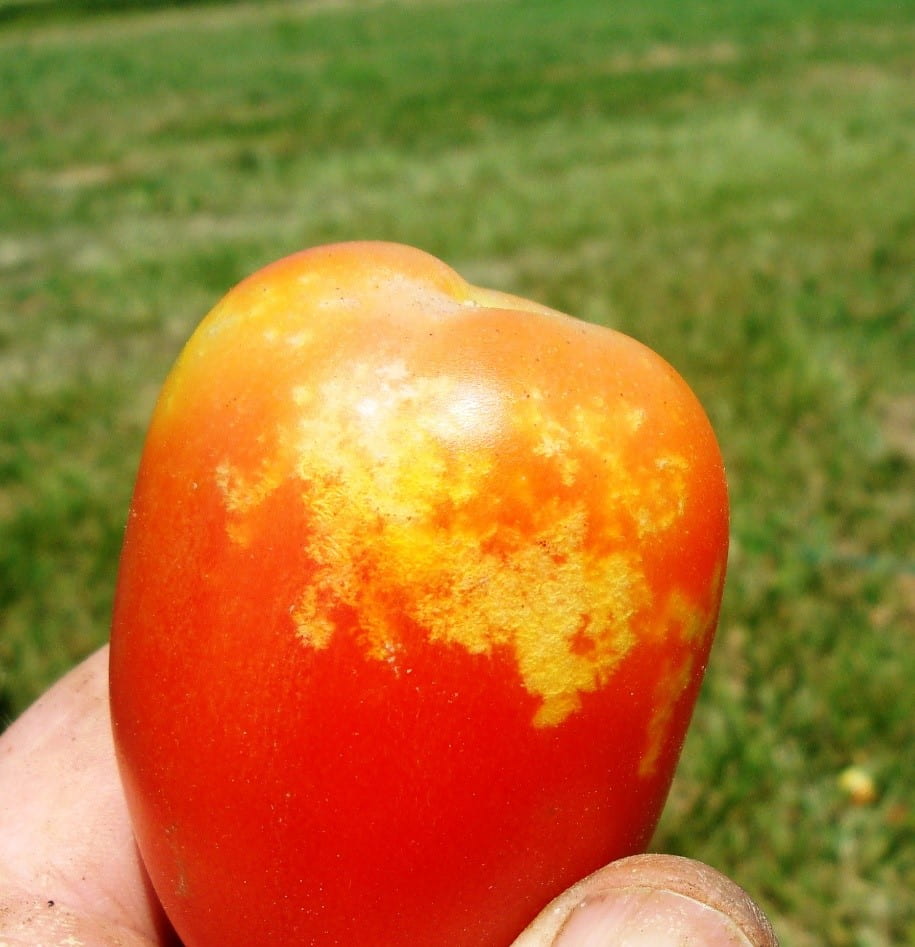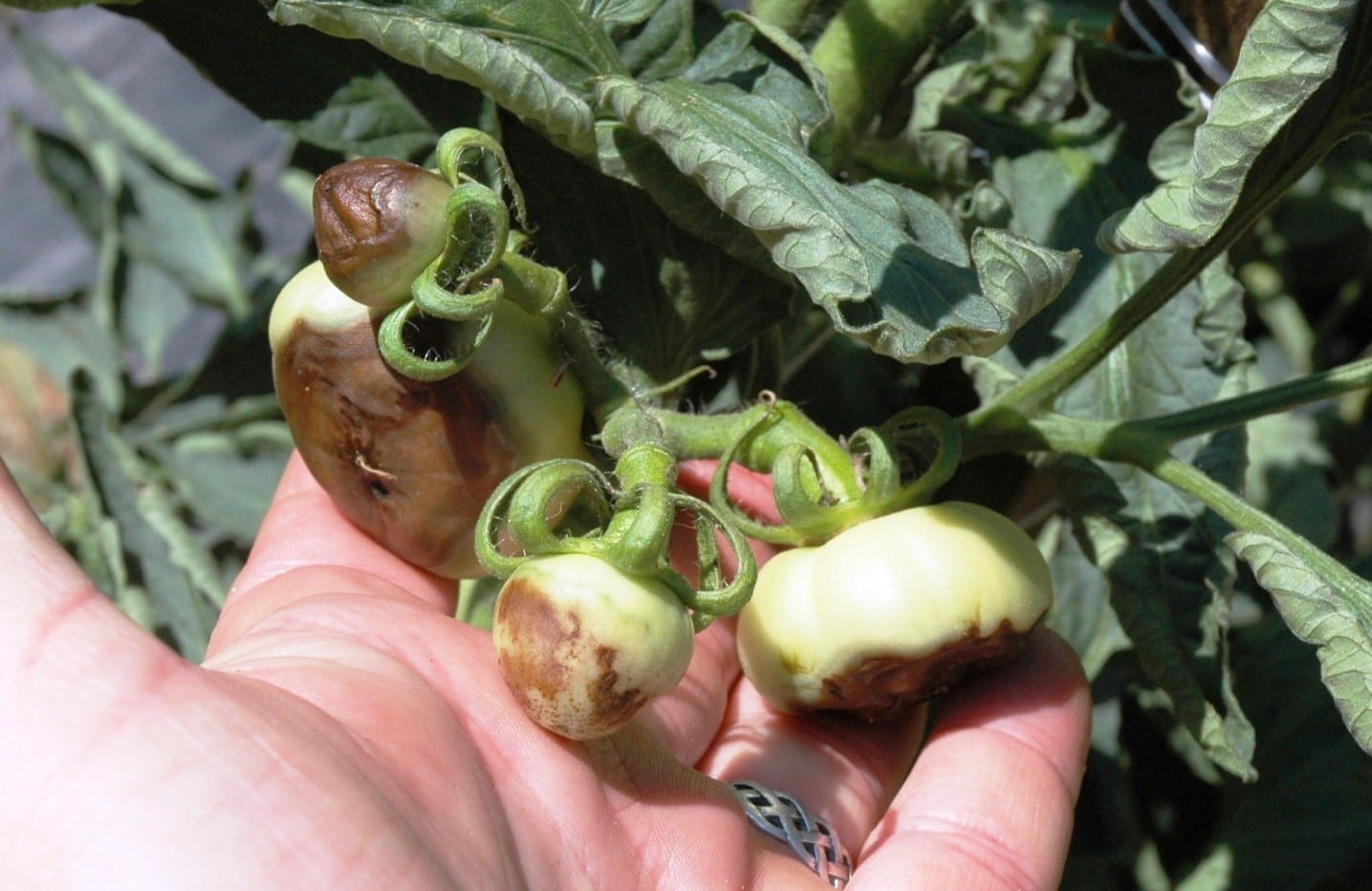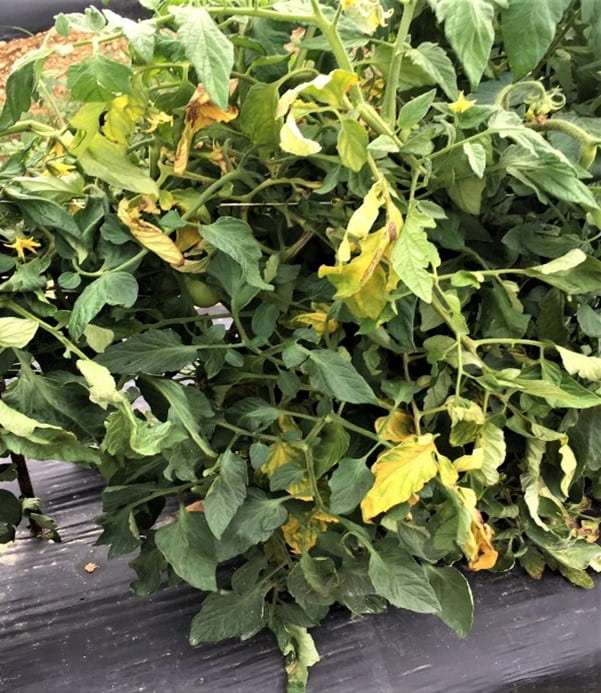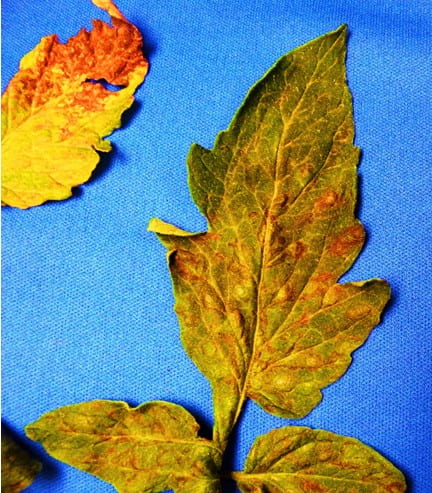Stinkbug Damage Found in Maryland Tomato Fields
Jerry Brust, UME
There have been reports of stinkbug damage in tomatoes in Maryland for the last couple of weeks. Stinkbug feeding damage is called cloudy spot in tomato fruit (fig. 1). It occurs when the adult or immature stinkbug puts its needle-like mouth part into the fruit and removes material from a large number of cells. On green fruit the damage appears as whitish areas with a black dot in the center and indistinct borders (fig. 2) on ripe fruit the spots are golden yellow (fig. 1). Individual spots may be 1/16 -1/2 inch in diameter; or the spots may merge and encompass a large area of the fruit surface (fig. 2). Peeling back the skin shows these areas as white shiny, spongy masses of tissue (fig. 3). This damage is usually most common from mid-July until the end of the season.

The Green and Brown as well as the Brown Marmorated stinkbugs are often difficult to see and usually go unnoticed as they spend much of the day deep inside tomato plants, any disturbance and the stinkbugs will drop to the ground and move under the plastic, which results in monitoring difficulties. Only a few are necessary to cause the appearance of cloudy spot on many tomato fruit. Although stinkbug damage has been observed in slightly greater than usual amounts in tomato fields this year, observations of stinkbugs have been much less numerous.
Continue reading Stinkbug Damage Found in Maryland Tomato Fields


